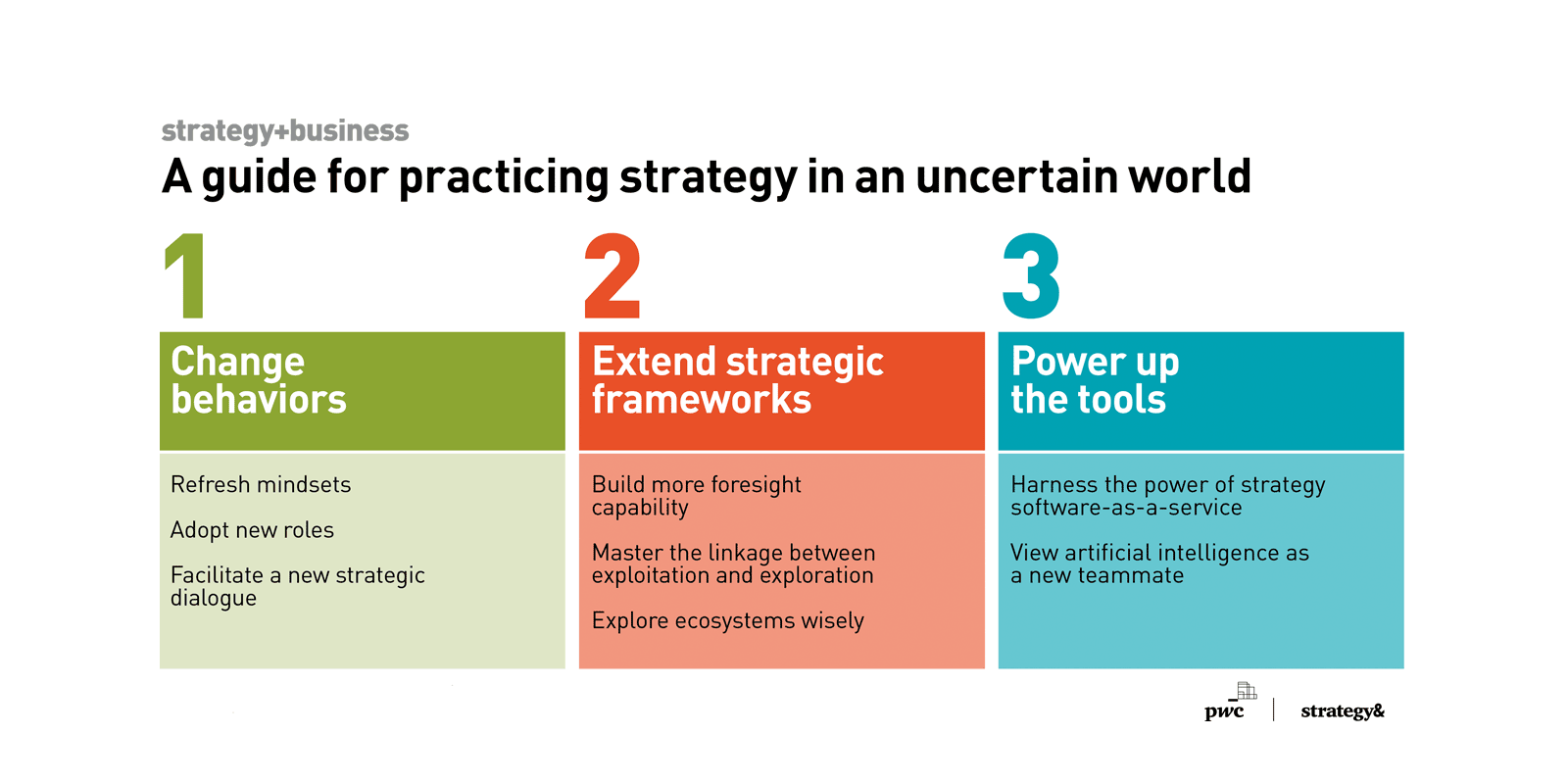Business Strategy in Uncertain Times
In todays rapidly evolving marketplace, businesses face unprecedented levels of uncertainty. From economic fluctuations and global pandemics to technological disruptions and changing consumer behaviors, organizations must adapt their strategies to survive and thrive. This article will explore how businesses can effectively navigate these uncertain times by developing a flexible and resilient business strategy.

Understanding the Landscape of Uncertainty
Definition of Uncertainty in Business
Uncertainty in business refers to the unpredictable factors that can affect an organizations operations and success. These factors may stem from external influences such as market trends, regulatory changes, and economic conditions, as well as internal challenges like operational inefficiencies and employee morale.
Causes of Business Uncertainty
The sources of uncertainty are multifaceted and can significantly impact strategic decision-making. Common causes include:
- Economic Instability: Fluctuations in the economy can lead to unpredictable consumer spending patterns and investment behaviors.
- Technological Change: Rapid advancements in technology can disrupt established business models, making it essential for companies to stay agile.
- Global Events: Events such as pandemics, geopolitical conflicts, and environmental disasters can create significant disruptions in supply chains and customer behavior.
- Regulatory Changes: Shifts in regulations can affect how businesses operate, often requiring quick adaptations to remain compliant.
The Importance of a Flexible Business Strategy
In uncertain times, a flexible business strategy is crucial for survival and growth. Organizations must be able to pivot and adapt to changing circumstances quickly.
Adapting to Rapid Changes
Businesses that prioritize flexibility can respond effectively to emerging challenges. This involves:
- Scenario Planning: Anticipating various scenarios and developing action plans for each can prepare organizations for different outcomes.
- Real-time Decision-Making: Utilizing data analytics enables businesses to make informed decisions based on current market conditions.
Embracing Innovation and Agility
Innovation should be at the heart of any strategy, particularly during uncertain times. Companies can foster a culture of innovation by:
- Encouraging Experimentation: Allowing teams to test new ideas can lead to breakthrough solutions.
- Adopting Agile Methodologies: Implementing agile practices helps teams respond to changes more efficiently, reducing the time it takes to bring new products to market.
Key Components of a Resilient Business Strategy
To build resilience in the face of uncertainty, organizations should focus on several key components:
Market Analysis and Research
Understanding market dynamics is vital for navigating uncertainty. This involves:
- Understanding Customer Needs: Regularly engaging with customers to gather feedback can help organizations anticipate shifts in demand.
- Monitoring Competitor Moves: Keeping an eye on competitors’ strategies allows businesses to adapt and remain competitive.
Risk Management Practices
A robust risk management framework is essential for identifying and mitigating potential threats. Effective practices include:
Identifying and Assessing Risks
Conducting a comprehensive risk assessment helps organizations identify vulnerabilities in their operations. Key steps include:
- Risk Inventory: Cataloging potential risks across all business functions.
- Impact Analysis: Evaluating the potential consequences of identified risks to prioritize response efforts.
Developing Contingency Plans
Having contingency plans in place can significantly reduce the impact of unforeseen events. Organizations should:
- Create a Plan B: Develop alternative strategies to pivot operations quickly if the primary plan fails.
- Regularly Review Plans: Continuously update contingency plans based on new insights and changing circumstances.
Financial Planning in Uncertain Times
Sound financial planning is critical for sustaining operations during volatile periods. Key considerations include:
Budgeting for Flexibility
Organizations should create budgets that allow for adjustments in response to changing market conditions. This can be achieved by:
- Allocating Resources Wisely: Prioritizing spending on areas that drive growth while maintaining a buffer for unexpected expenses.
- Monitoring Financial Performance: Regularly reviewing financial metrics to identify trends and make timely adjustments.
Diversifying Revenue Streams
Relying on a single source of income can be risky in uncertain times. Businesses can mitigate this risk by:
- Exploring New Markets: Expanding into new geographical areas or demographics can create additional revenue opportunities.
- Developing New Products or Services: Innovating and diversifying the product portfolio can attract different customer segments.

Implementing Strategies for Success
Once a resilient business strategy is established, organizations must focus on execution to achieve desired outcomes.
Enhancing Communication and Collaboration
Effective communication is vital for fostering collaboration and ensuring all team members are aligned with strategic goals.
Internal Communication Strategies
Implementing clear internal communication channels can help organizations stay coordinated during uncertain times. Strategies include:
- Regular Updates: Keeping teams informed about company changes and market conditions through newsletters or town hall meetings.
- Feedback Loops: Encouraging feedback from employees to identify areas for improvement and innovation.
Building External Partnerships
Developing strong partnerships with suppliers, customers, and industry stakeholders can enhance resilience. Collaborative efforts can lead to shared resources and knowledge, benefiting all parties involved.
Leveraging Technology and Digital Tools
In an era of uncertainty, technology plays a pivotal role in enabling businesses to adapt and thrive.
Utilizing Data Analytics
Data-driven decision-making can significantly improve strategic planning. Organizations should invest in analytics tools to:
- Identify Trends: Analyze market data to detect emerging trends that can inform strategic adjustments.
- Monitor Performance: Use analytics to track key performance indicators (KPIs) and make timely decisions.
Adopting Remote Work Solutions
Embracing technology for remote work has become essential in uncertain times. Organizations should consider:
- Flexible Work Arrangements: Allowing employees to work remotely can enhance productivity and morale.
- Digital Collaboration Tools: Investing in platforms like Slack, Zoom, or Microsoft Teams facilitates communication and collaboration, regardless of location.

In the second half of this article, we will delve into specific case studies of companies that have successfully navigated uncertain times, showcasing their strategies and the lessons learned. Stay tuned to discover how you can implement similar approaches in your organization.
Case Studies: Successful Strategies in Uncertainty
To illustrate how businesses can thrive in uncertain times, lets explore two real-world examples of companies that successfully adapted their strategies to navigate challenges effectively.
Company A: Navigating Economic Downturns
Company A, a leading retail chain, faced significant challenges during an economic downturn that affected consumer spending. Instead of succumbing to the pressures, they adopted a proactive approach that included:
- Enhancing Online Presence: They invested heavily in their e-commerce platform, improving user experience and expanding delivery options. This shift allowed them to capture a broader market segment, especially among consumers who preferred shopping online during the downturn.
-
Flexible Pricing Strategies: Company A implemented dynamic pricing strategies to attract cost-conscious consumers while also promoting high-margin products through targeted marketing campaigns.
-
Community Engagement: They strengthened their brand loyalty by engaging with local communities through sponsorships and partnerships with local businesses, showcasing their commitment to social responsibility.
Company B: Pivoting During a Crisis
Company B, a tech startup, found itself in a precarious position when a global crisis disrupted its supply chain. To overcome these challenges, they:
- Diversified Suppliers: Rather than relying on a single supplier, they quickly diversified their supply chain by partnering with multiple vendors across different regions. This move minimized risks and ensured continuous access to essential components.
-
Emphasized Innovation: Company B prioritized innovation by redirecting resources toward developing new products that met the evolving needs of their customers, such as remote working tools and health monitoring apps.
-
Transparent Communication: They maintained open lines of communication with customers and stakeholders about supply chain issues, building trust and understanding during a tumultuous period.
Conclusion
Recap of Key Points
In uncertain times, businesses must adapt and evolve their strategies to thrive. Key takeaways include:
- The importance of flexibility in business strategies to respond to rapid changes.
- Effective risk management practices to identify, assess, and mitigate potential threats.
- Leveraging data analytics and technology to inform decisions and optimize operations.
- Cultivating strong communication both internally and externally to foster collaboration and trust.
Future Outlook for Businesses in Uncertain Times
As we look ahead, businesses that remain agile and innovative will be better positioned to succeed in an unpredictable environment. Here are some strategies to consider for future resilience:
- Investing in Technology: Continued investment in technology can enhance operational efficiencies and provide valuable insights through data analytics.
-
Building Stronger Relationships: Strengthening relationships with customers, suppliers, and partners will foster a collaborative approach to overcoming challenges.
-
Prioritizing Sustainability: Focusing on sustainable practices can not only mitigate risks associated with regulatory changes but also resonate with increasingly conscious consumers.

FAQs
What are the key elements of a successful business strategy during uncertainty?
A successful business strategy should include flexibility, robust risk management, market analysis, and strong communication practices.
How can a business improve its adaptability?
Businesses can improve adaptability by regularly reviewing their strategies, investing in training for employees, and utilizing data analytics to inform decisions.
What role does innovation play in uncertain times?
Innovation is crucial for identifying new opportunities and addressing changing customer needs, enabling businesses to stay competitive and relevant.
How important is communication during a crisis?
Effective communication is vital during a crisis as it helps build trust with stakeholders, facilitates collaboration, and ensures everyone is aligned on strategic goals.
Final Thoughts
Navigating uncertain times can be challenging, but with the right strategies in place, businesses can not only survive but thrive. Embrace flexibility, prioritize innovation, and cultivate strong relationships to secure a brighter future amidst the chaos. By learning from those who have successfully navigated these waters, your organization can be better prepared for whatever challenges lie ahead.

In conclusion, businesses must be proactive in their approach to strategy, adapting to the ever-changing landscape with resilience and foresight. The path may be fraught with uncertainty, but it is also paved with opportunities for those willing to innovate and adapt.

